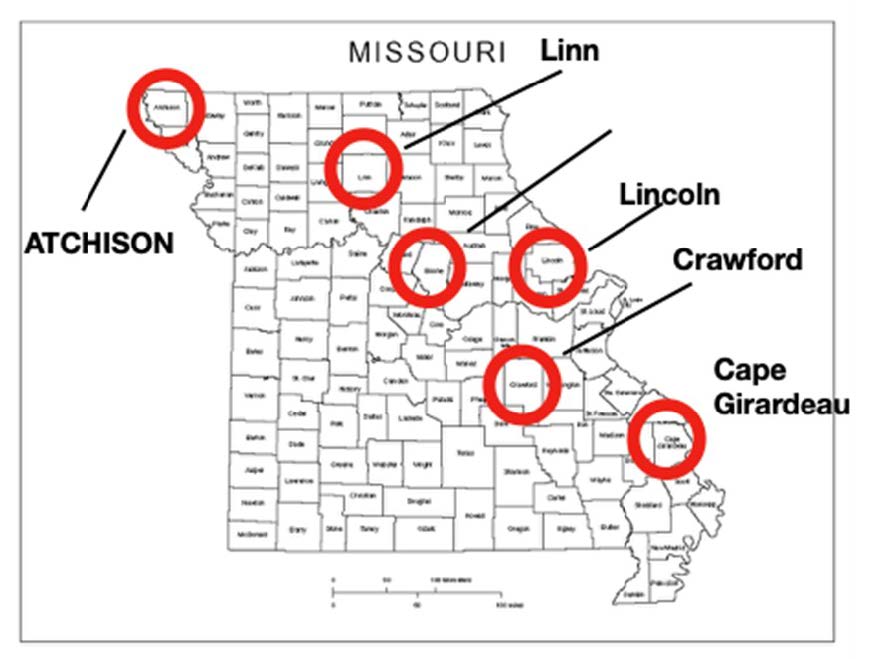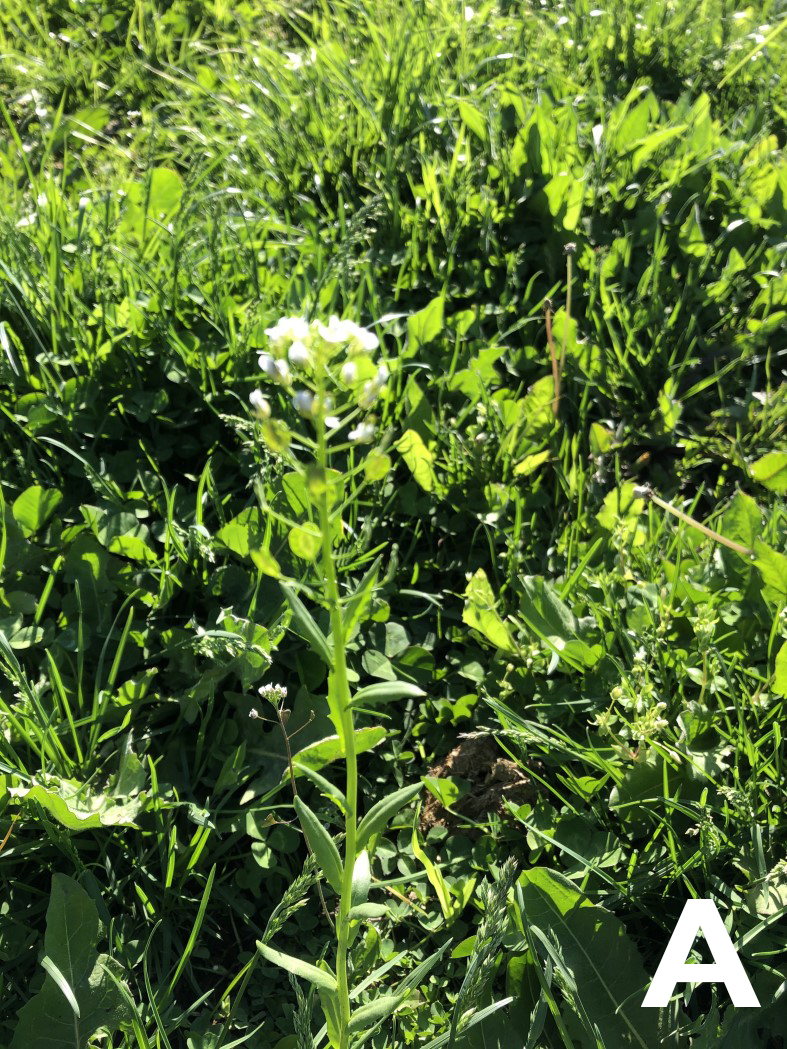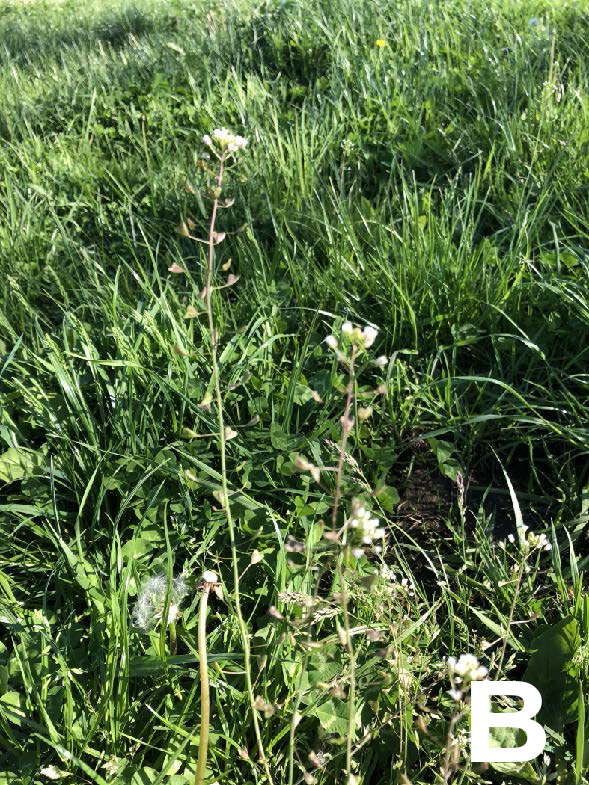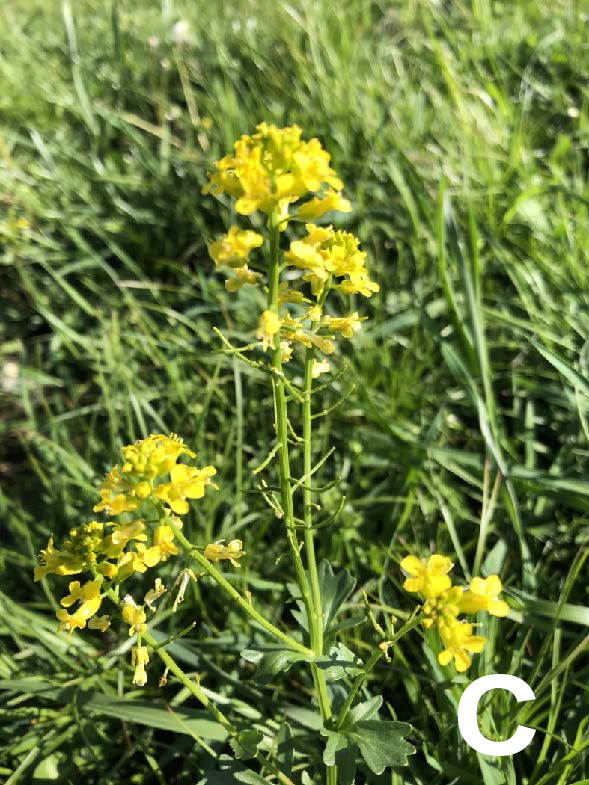Vinews
No. 1 — April 27, 2020
Contents:
- Phomopsis Cane and Leaf Spot
- Frost Freeze Events Result in Damage to Some Missouri Vineyards
- Be Aware of Herbicide Drift
- Tips to Minimize Soil Compaction During Spring Spraying Events
- Cumulative Growing Degree Days for the Seven Grape Growing Regions of Missouri from April 1 to April 24, 2020
Phomopsis Cane and Leaf Spot
With precipitation in the forecast for the next few days the biggest threat will be from Phomopsis viticola that causes cane and leaf spot. We learned last month that Phomopsis was the most prevalent trunk disease found in a recent survey of Missouri vineyards. This finding leaves no doubt that inoculum of Phomopsis viticola is present throughout Missouri vineyards.
The temperatures for the next seven days coupled with precipitation will likely result in infection periods for Phomopsis. Ideal temperatures for infection are between 60 to 68°F. On average April air temperatures trended 2 to 3°F cooler compared to normal. These lower air temperatures result in extending the tissue wetting period after a precipitation event. Precipitation is going to be sporadic for the next seven days as the jet stream will be dipping out of the north and directly split the state of Missouri in half. This will likely result in pop-up rain events. Therefore be prepared for periods of rainfall.
Chemical management of Phomopsis is through mainly protective fungicide applications that contain the active ingredient mancozeb. A number of products on the market are labelled for grapes such as Dithane, Manzate and Penncozeb (Table 1). These products are protectants and need be applied prior to infections. Mancozeb products are superior to Captan in the early season as Captan has limited activity on Black rot, Guignardia bidwellii. An early season spray program would entail a mancozeb containing product be applied every seven to 10 days.
If you are nearing the end of your last cover spray, plan accordingly to get another application applied between periods of precipitation. The mancozeb products must dry on the plant surface prior to a rainfall event to provide protection.
At this time in the growing season, the shoot growth is limited and water carrier in the spray solution can be reduced. Applying 1.5 pounds of Dithane, Manzate or Penncozeb in 25 gallons of water per acre is the same as applying 3 lbs in 50 gallons of water per acre later in the growing season. Remember also to adjust your spray nozzles to spray the emerging shoots and to and to shut other nozzles off. As the canopy grows turn other nozzles on to provide good spray coverage.
Lastly, pay attention to the storage of products containing mancozeb. Products should be stored in cool dry ventilated area and products packaging should be closed to avoid exposure to air and moisture. There is evidence that mancozeb can convert to chemical products that can be phytotoxic to grapevine tissue if not stored properly. See: Norton and Mancozeb Phytotoxicity.
Midwest Fruit Pest Management Guide 2010-2020 (PDF)
| Product | Active ingredient % |
Use rate lbs/acre |
PHI/REI |
|---|---|---|---|
| Dithane M45 | 80 | 1.5 to 4 | 66 days/24 hours |
| Manzate Pro-Stick | 75 | 1.5 to 4 | 66 days/24 hours |
| Penncozeb 75DF | 75 | 1.5 to 4 | 66 days/24 hours |
Frost Freeze Events Result in Damage to Some Missouri Vineyards

Frost and freeze events that occurred on April 10 and April 18 resulted in damage to the primary shoot on some cultivars (Table 2). The stage of vine development during the first frost/freeze event on April 10 varied based on location. Grapevines in the southern area of the state were more advanced compared to grapevines in central and northern Missouri. Counties in and around Crawford County experienced 26.7°F on April 10. This resulted in damage to the primary shoots of Rougeon, Vignoles, and Valvin muscat. Most grape cultivars throughout Missouri were at susceptible growth stages to frost freeze events on April 18. The more northern counties of Atchinson and Linn had no to little frost, similarly the southern county of Cape Giradeau. Whereas central Missouri (Boone County), East central (Lincoln) and South central (Crawford County) experienced freeze events near 26°F. The April 18 freeze event resulted in approximately 60% primary shoot loss in cultivars that were advanced in development such as; Vignoles, Norton, Rougeon, Niagara, Concord, and Cayuga white. The Mountain Grove Fruit Experiment Station reported that most cultivars sustained damage from the April 18 frost/freeze event (Figure 1). Grape cultivars that were less advanced in phenology such as Traminette and Vidal blanc were not impacted greatly by the frost freeze event according to Marilyn Odneal, Mountain Grove Fruit Experiment Station.

| Date | Atchinson | Boone | Cape Giradeau |
Crawford | Lincoln | Linn |
|---|---|---|---|---|---|---|
| April | Temperature in degrees F | |||||
| 9 | 29.1 | 34.5 | 42.6 | 39.8 | 36.3 | 32.6 |
| 10 | 23.5 | 28.0 | 34.3 | 26.7 | 30.7 | 24.9 |
| 11 | 48.1 | 43.4 | 39.2 | 46.0 | 46.2 | 44.1 |
| 12 | 29.8 | 33.0 | 54.5 | 36.8 | 35.4 | 31.5 |
| 13 | 24.3 | 28.6 | 38.4 | 33.0 | 32.2 | 27.5 |
| 14 | 22.6 | 28.3 | 37.3 | 28.4 | 30.9 | 26.6 |
| 15 | 21.6 | 33.7 | 32.4 | 27.0 | 30.5 | 26.8 |
| 16 | 31.5 | 35.7 | 34.8 | 28.6 | 28.0 | 31.6 |
| 17 | 31.5 | 30.0 | 41.0 | 37.6 | 32.4 | 32.2 |
| 18 | 35.7 | 26.8 | 31.3 | 26.3 | 26.3 | 31.0 |
Be Aware of Herbicide Drift
Cooler than Normal April Sets the Stage for Late Applications of Growth Regulating Herbicides to Grass Pasture and Grass Hay Fields
The month of April was 2 to 3°F below normal on average. In addition, 2-inch soil temperatures for the first two weeks of April were much colder than the 30-year average. This resulted in many of the winter annual weeds being suppressed in growth. Now many of the winter annual weeds are readily apparent in grass pastures as the bright yellow flower heads of yellow rocket and other mustard family weeds. The other common winter annual weeds apparent are shepherds purse and field pennycress. All these weeds are typically controlled with 2,4-D, a synthetic auxin growth regulating herbicide. There are not any comparable herbicides that are effective and price comparable as 2,4-D. There are ways to reduce risk from herbicide drift from synthetic auxin herbicides such as 2,4-D. Most importantly become aware who your neighbors are and what they are growing and producing. Second provide these tips for reducing herbicide drift.
- Herbicides should be applied when the wind is not blowing towards a sensitive crop such as grapes.
- The herbicide spray solution should contain a drift retardant to minimize physical drift.
- The application pressure should be low to minimize the potential for small spray droplet size.
- The sprayer boom should be lowered to the lowest level above the target weeds that provides the best spray coverage.
- The sprayer should be fitted with spray tips that produce large droplet sized such as air induction nozzles to reduce physical drift.
- Synthetic auxin herbicides should never be applied when air temperatures are ≥85°F and air temperatures 48 hours after application are going to be ≥85°F.
- If 2,4-D is going to be applied, the amine formulation should be used to reduce the potential for vapor drift. Ester formulations of 2,4-D have reduced vapor pressure and are more prone to vapor drift compared to amine formulations.
- Many of the weeds being targeted now are winter annuals (Figure 2) and are best managed when in the rosette stage. The most common winter annual weeds that are highly visible in grass hayfields or pastures today are Field Pennycress, Shepherdspurse, and Yellow rocket (Figure 1).
The reason these weeds are so visible now is because of the bright yellow or white flowers. These weeds are currently producing seeds and at this stage of growth are more difficult to kill with 2,4-D. Most of the winter annual weeds are best managed with herbicides in the late fall when the weeds are in the small rosette stage of growth. Typically this occurs in mid to late October. At that time in the growing season, the grapes are harvested and the potential for herbicide drift damage to grapevines in minimized.



Weed Id Guide
Tips to Minimize Soil Compaction During Spring Spraying Events
Continued rainfall events have resulted in saturated soil conditions across most of Missouri vineyards. Many vineyards may be nearing the end of the first or second cover spray of fungicide an another cover spray will need to be applied. Taking heavy equipment such as tractors and airblast sprayers onto saturated soils causes the collapse of soil aggregates. In turn surface soil becomes compacted, rutting occurs and the subsoil becomes compacted.
Soil compaction reduces water infiltration, root development and is known to reduce yield in row crop grains such as corn and soybean.
To minimize soil compaction during spraying:
- Reduce the amount of spray solution in the sprayer tank. This will reduce the amount weight on the axles but increase the amount times you must mix fungicides. If you have a smaller tractor that has the horsepower capacity to operate your sprayer consider using a smaller lightweight tractor.
- Adjust tire air pressure on your sprayer to match the axle load. Larger tires with lower air pressure provide more surface area and reduce pressure on the soil surface.
- Depending on your soil conditions and vineyard site, you may need to consider applying fungicides using an alternate row cover. Meaning you spray every other row. If considering alternate row cover, make sure to adjust your sprayer nozzles, baffles, fan speed to provide coverage to the distant vineyard rows. Be aware that there are risks involved in alternate row cover such as poor coverage. I do not recommend alternate row cover sprays precisely because of poor coverage. However with ponding water in some vineyards this may be your only choice in some areas where water is ponding.
Cumulative Growing Degree Days for the Seven Grape Growing Regions of Missouri from April 1 to April 24, 2020
| Region | Location by County | Growing Degree Days1 | ||
|---|---|---|---|---|
| 2020 | 2019 | 30-year Average | ||
| Augusta | St. Charles | 165 | 234 | 216 |
| Hermann | Gasconade | 162 | 231 | 216 |
| Ozark Highland | Phelps | 167 | 254 | 231 |
| Ozark Mountain | Lawrence | 188 | 251 | 236 |
| Southeast | Ste. Genevieve | 166 | 244 | 229 |
| Central |
Boone | 163 | 229 | 202 |
| Western | Ray | 152 | 209 | 193 |
1 Growing degree days at base 50 from April 1 to April 24, 2020. Data compiled from Useful and Useable at https://mygeohub.org/groups/u2u/tools. Click on link below to determine growing degree days in your area.
To determine the number of growing degree days accumulated in your area since April 1, use this tool.